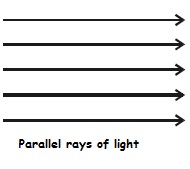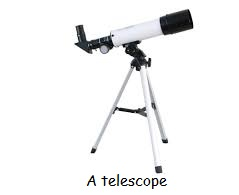Join Our Groups
TOPIC 9: LIGHT
Sources of Light
The Concept of Light
Explain the concept of light
Light if a form of energy. It is a kind of energy which can stimulate our eyes and make us see things around us. Light can carry both energy and information. Light energy can travel in vacuum and at very high speed of about 300,000,000 m/s.
By definition, light is the form of energy which stimulates the sensation of our vision. It is not possible to see objects without light. In order for our eyes to see objects, light must come from the objects to our eyes.
Sources of Light
Identify sources of light
Sources of light can be natural or artificial. The sun is the natural source of light. On the other hand, torches, candles, kerosene lamps, electric bulbs, fluorescent lamps, are some common examples of artificial sources of light.
Natural sources of light produce light energy naturally by their own while artificial sources of light give out light energy after transforming it from other forms of energy.
For example, electric lamp produce light by transforming electrical energy into light energy. Torches produce light energy from the chemical energy stored inside the dry cells.
Difference between Luminous and Non-luminous Bodies
Distinguish luminous from non-luminous bodies
Luminous bodies are bodies which can produce light energy by their own. Examples of luminous bodies are The Sun, Stars, electric bulbs, candles, fluorescent lamps, torches and many more.
Non-luminous bodies are bodies which do not produce light by their own, but they reflect light from luminous objects. One of the non-luminous bodies is The Moon which reflects light from the sun. Non-luminous bodies are seen because they reflect light from luminous bodies.
Propagation and Transmission of Light
The Concept of Rays and Beam of Light
Explain the concept of rays and beam of light
A straight line showing a path of light is called a ray. The ray is the direction of the path taken by light. Rays of light are represented in diagrams by full straight line with an arrow marking the direction in which the light is travelling.

A beam is a stream of light rays, and it is usually represented by a number of rays. Rays of light can converge (converging rays), diverge (diverging rays) or can be parallel (parallel rays).



Verification that Light Rays Travel in Straight Line
Verify that light rays travels in straight line
Activity 1
Aim: To demonstrate the rectilinear propagation of light.
Materials and apparatus
- The pieces of card board with a hole in each.
- Source of light, eg. a candle.
Procedures:
- Put the pieces of cardboard with the holes in a straight line.
- Arrange them to a distance of about 50cm apart.
- Place a lighted candle at one end of cardboard A. observe the light from behind cardboard C.
- Now displace any one of the pieces of cardboard, eg. Cardboard B.

Propagation of light in straight line.
Observations
When observing from card C, the candle can be seen. Displacing any one of cardboards, the candle can no longer be seen as the holes are no longer in a straight line. This happens due to the fact that light travels in a straight line.
Transparent, Translucent and Opaque Materials
Identify transparent, translucent and opaque materials
Objects can be grouped according to transmission of light through them, ie. The degree passage of light as light rays falls on their surface.
Opaque bodies
These are bodies which do not allow light to pass through them, ie. Stones, wood, concrete walls and bodies.
Translucent bodies
These are bodies which allow small amount of light falling on them to pass through e.g oiled paper, some plastic materials and tinted glass.
Transparent bodies
These are bodies which allow all light to pass through them, e.g glass, pure water and air. The transmission of light through different bodies can be investigated by performing other experiment.
Activity 2
Aim: To investigate transmission of light.
Materials
- Sheet of paper
- Sheet of glass
- Tinted glass
- Card board
- Oil paper
Guiding questions
- Which of the materials are opaque?
- Which of the materials are transparent?
Reflection of Light
The Concept of Reflection of Light
Explain the concept of reflection of light
Reflection is the sending back of light rays after they meet an obstacle. It can also be defined as throwing back of light when they strike an obstacle. Light rays which are obtained after reflection are known as reflected rays.
The direction of the reflected light rays depends on the nature of the surface of the obstacle. The obstacle can be smooth or highly polished in nature or rough. A highly polished surface e. g plane mirror is a good reflector of light than the rough surface.
Difference between Regular and Irregular Reflection of Light
Distinguish regular from irregular reflection of light
There are two types of reflections namely;
Regular reflection – kind of reflection in which reflected rays are parallel and travel in the same direction. Regular reflection of light takes place when light rays incident (strike) the smooth or highly polished surface. Regular reflection result in formation of clear and sharp images.

<!--[endif]-->Irregular reflection- also known as diffused or scattering refection is the kind of reflection in which reflected rays are not parallel and travel in different directions. Irregular reflection takes place when light rays incident on a rough surface. No image is formed under diffused reflection though sometime blurred images can be seen.

Application of the Laws of Reflection of Light
Apply the laws of reflection of light
Reflection is guided by some natural laws called “Laws of reflection” the Laws of reflection state that:
- The incident ray, the reflected ray, and the normal at the point of incidence all lies in the same plane.
- The angle of incidence is equal to the angle of reflection.

Angle of incidence it the angle between the incident ray and the normal. The angle of reflection is the angle between the reflected ray and the normal. The normal is the imaginary line which strike the reflecting surface perpendicularly. The point of incidence is the point on the reflecting surface where the incident ray, reflected ray and the normal meet.
Image Formed by a Plane Mirror
Describe image formed by a plane mirror
When you stand in front of the mirror you see yourself as if in the inside or behind the mirror. What you see is just the image of you. That image is not actually behind the mirror but it is formed in your eye. The image just appears to be behind the mirror.
Image in the mirror is formed by the interaction of the reflected rays of light. That is, reflected rays when extended behind the mirror they form image which appears to be behind the mirror.

Characteristics of images formed in a plane;
The image formed by in the plane mirror has the following characteristics; -
- It is virtual (not real) – the image appears to be formed behind the mirror but it is not real there.
- It is upright – the image is erect just like the object. If the head of the object is up then the head of the image will be up.
- The image is the same size as the object – the image has the same size as the object. A taller image will be seen taller just like the object.
- The image is laterally inverted – the image is seen as reversed left -right. That is the left side of the image is the right side of the object.
- The image is at the same distance from the mirror as that of the object. That is, the distance of the image from the mirror is equal to the distance of the object from the mirror.
MULTIPLE MIRRORS
One image is formed when the object is in front of a single mirror. The number of images changes depending on the number of mirrors used and the angle at which they are kept to each other.
The object placed between two mirrors which are parallel to each other (at 00), will have infinite number of images formed.
If the two mirrors are placed at 900 between them, three images will be seen as shown in the below diagram.

APPLICATIONS OF REFLECTION OF LIGHT
Reflection of light is applied in;
- Viewing mirrors – to see ourselves.
- Periscopes – Periscope is a device that is used to view objects which are out of direct sight. It can view objects over obstacles. It is mostly used in submarines and by soldiers in war.

It consists of two mirrors fixed facing each other at an angle 450. Light is reflected by two mirrors so that an object can be seen by the observer.
3.Telescope -Telescope is an instrument containing lenses that are used to make far away object to appear larger and near. Often are used to observing stars, moon and other heavenly bodies when come nearer to earth’s atmosphere.







Thanks
返信削除